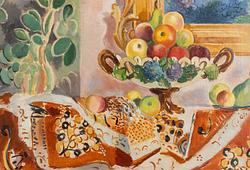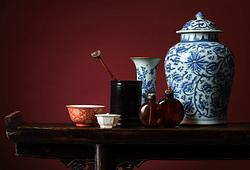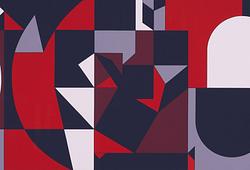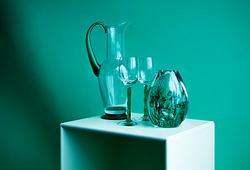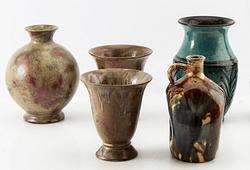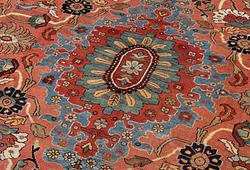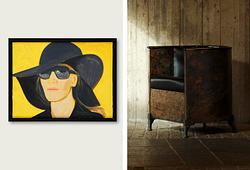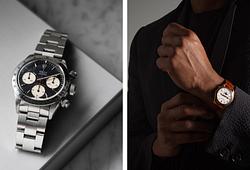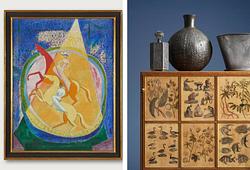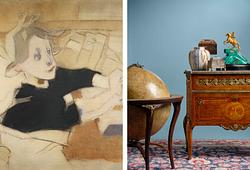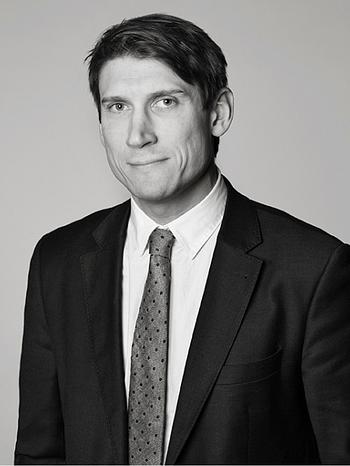Pablo Picasso
"Les Mains liées II" (Bound hands II)
Lithograph, 1952. Signed in pencil and numbered 30/50. 49.5 x 65.5 cm.
Import VAT
Import VAT (12%) will be charged on the hammer price on this lot. For further details please contact customer service +46 8-614 08 00.
Provenance
Arild Wahlstrøm, Norweigan art collector, (1909 - 1994).
Thence by descent to the present owner.
Literature
Bloch 709. Mourlot 211.
More information
Arild Wahlström var norsk industrialist och verkställande direktör och sedermera ordförande för Sande Tresliperi A/S och Sande Paper Mill A/S. Wahlström hade vid sidan om affärer och idrott ett stort intresse för konst och konstsamlande, vilket han delade med sin hustru Aasta. I hemmet på Holmenkollen byggde paret upp en omfattande samling med stora norska och internationella verk. Wahlström reste mycket och kombinerade gärna sina resor med besök hos gallerister och konstnärer. Han utvecklade nära relationer till ett flertal konstnärer och träffade Poliakoff, Henry Moore, Soulanges, Manessier, Singier och många fler. Tre gånger var han inbjuden att besöka Picasso i södra Frankrike med galleristen Kahnweiler men varje gång kom affärer emellan vilket var en stor besvikelse. Wahlströms stora intresse för Picassos grafik hade väckts efter kriget, vid en affärsresa till Paris 1946. På en liten sidogata hade paret Wahlström upptäckt en bild av ett kvinnohuvud i en konsthandel. ”Det var så vackert – vi blev bägge tagna av det med en gång. Det var något extraordinärt”. Händelsen ledde till ett intensivt samlande och resulterade i en av världens största privata samlingar av Picasso-grafik med över 1000 grafiska blad. 1982 donerade Arild Wahlström nästan 500 av dessa blad, bl.a. hela Vollard-sviten till Nationalgalleriet i Oslo.
Artist
Pablo Picasso (1881-1973), Spanish painter, printmaker, sculptor, and ceramist. Active in France since 1900. He is, alongside Matisse, the most dominant artist of the 20th century. After passing through a blue period, a pink period with circus scenes and harlequins, he created his first cubist painting, "Les Demoiselles d'Avignon," in 1907 under the influence of African sculptures. Together with Braque, he further developed cubism by breaking down surfaces, which were then represented in various simultaneous aspects. In 1912, he left nature and recreated a new reality, only to return to acrobats in 1916. During the 1920s, he approached surrealism and worked with whimsical forms while also producing drawings and etchings in line style. During the Spanish Civil War, he was violently stirred, and it is now that his great protest in the painting Guernica comes to fruition. In the late 1940s, he settled by the Mediterranean and produced nymphs, centaurs, and fauns, as well as paraphrases of the works of old masters, and painted powerful terracotta ceramics in Vallauris. His abundant graphic production follows the same development as his painting.
Pablo Picasso was not only an artist but also a skilled ceramist. During his lifetime, he created hundreds of ceramic works, such as jugs, vases, and plates. Picasso's passion for ceramics began when he visited the annual ceramics exhibition in Vallauris in southern France in 1946 and was introduced to the craft by the artist couple Suzanne and Georges Ramié, who owned the Madoura pottery. During the following years which he spent in Vallauris, Picasso met his second wife, Jacqueline Roque, whom he depicted on the ceramic pieces. He also decorated the ceramics with abstract animals and bullfighters in a cubist style.
Read more



